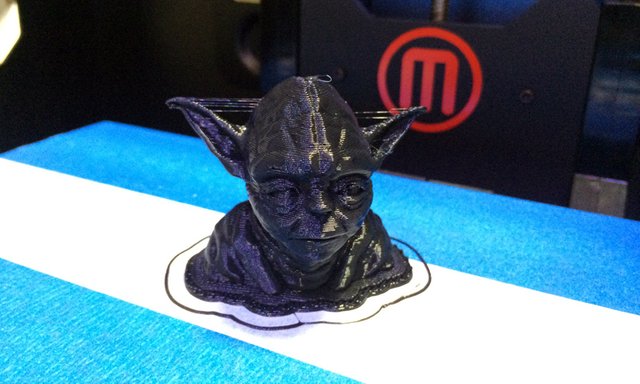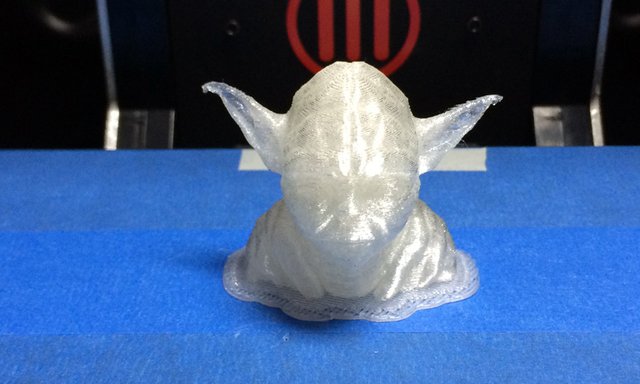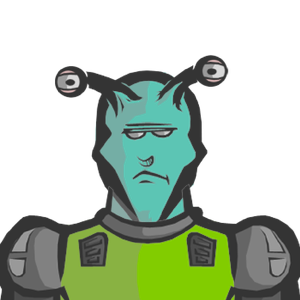3D Printing a Yoda Star Wars Bust

For some strange reason one of the first things that many people do if/when they get a 3D printer at home is to print some Star Wars model and apparently Yoda's bust is a popular first choice. I was just browsing some old 3D printing photos from around the time I got my first 3D printer about 2 years ago, and guess what I saw... some photos of a Yoda bust that I have 3D printed.
I even remember seeing somebody asking for that in a 3D printing related post here on steemit, though I can't seem to find the post at the moment. Anyway I have decided to post a photo of the Yoda bust that I have 3D printed, the funny thing is that I have apparently made more than a single print and I don't even remember that, but apparently have a photo proof.

I did not create the 3D model of the Yoda bust, back then I was just getting started with 3D printing and was learning a lot of new things every day, I have downloaded it from Thingiverse. The 3D prints on the photos were of a Yoda bust 3D printed with a lower layer height of 0.3mm, so you can easily see the lines of the different layers... Ok, maybe not so easily on the second photo where I have used semi-transparent PLA filament and the details are not very clearly visible on the photo, unlike on the 3D print with black material.
If you are just getting started in 3D printing and you may not be aware of the extensive library of models for 3D printing that is available on Thingiverse, then I suggest that you check the website out.
The exact 3D model for the Yoda Bust that I used was this one: Yoda bust (cleaned and simplified)
Did you like what you have just read? Check my other posts on steemit @cryptos
Like the black Yoda, clearly visible. Thanks for the post!
How does the proces work?
You told about supporting certain prints, what defines it needing support parts? Would be interesting for me to know the proces that you follow. (And maybe others who want to get into 3d printing at home would like this too.)
As I have mentioned in a comment before everything that needs to be printed horizontally over thin air does not work fine for printing without adding support material from the base of the print plate to hold it. Most 3D printing software (these are usually called slicers) can automatically calculate where it needs to add support. This however does not always work well and sometime it misses some areas, so having a slicer that also allows you to add custom support structures is a good idea... that is if you already have the experience to know when and where you need to add them.
The Yoda bust does not have very challenging areas, so it can easily print without support material. Though some slicing software can still suggest adding support structures at some possibly problematic zones, you can go without them. These include zones around the eyes and maybe the chin of Yoda, even the ears could be considered possibly problematic, but as they are angled printing them without support material is usually not a problem.
When you have something moving sideways at an angle and not directly horizontal over thin air it usually prints fine as the previous layer acts like support for the next one that is extending just a bit to the side - the ears of Yoda are a good example of this.
I'll be writing a detailed post explaining this...
Okay, thanks for the insight, still have to visualize things to grasp it. But I think this design does not fit the description. Will have a go at it, using your guidelines.
Based on the original at RoboHash:
STL file: CLICK HERE
Here the eyes on top of the head will be problematic to print without support material if you try to print it this way. Depending on the 3D model there are times that you might be able to overcome the issue by just rotating it around and not have it 3D printed the way it should normally be used.
With the 3D model on the photo if the stand at the bottom was not extending to the back you could just rotate it on its back and print just fine without support materials. You can still do it now, but support material will be required for proper printing.
Yes, you got the idea of having it 3D printed rotated on a flat back for example and thus going without the need to use support materials. When you are 3D printing on your home 3D printer you usually do not go for solid insides of the object as it is taking up more material and time to print and is rarely beneficial. Instead you use about 10-20% of infill and the 3D printing software uses a hexagonal or round pattern to fill the inside, so you get enough strength without having it 100% solid.
That will be the next step to do, hollow it, add hex structure.
But that will be at a later stage. Time flies when you're having fun. ;-)
If I get a bit a grip of this, then this would at least work a bit better...
Designed it to be flat:
And here is the STL file to download: CLICK HERE
Did not optimize anything yet. Think some material could be saved by making it hollow inside.